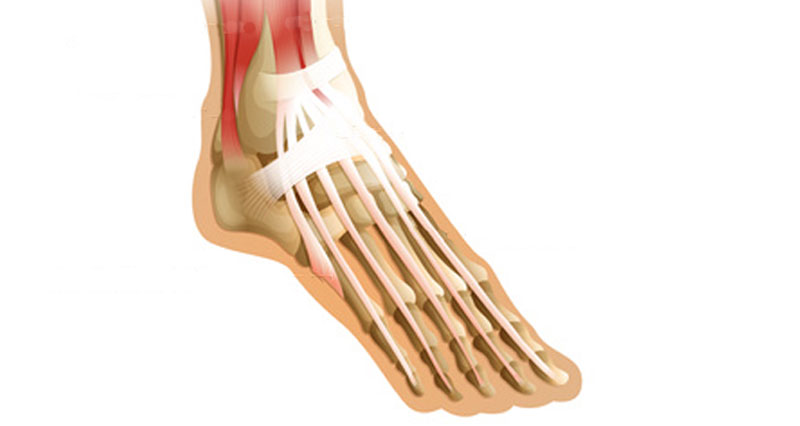The following Extensor tendonitis exercises form part of our Extensor tendonitis rehabilitation program. Both stretching and strengthening exercises are important. We also include movement control or proprioception exercises.
Extensor tendonitis stretching exercises
In the very early stages, especially if your foot is painful, we recommend not stretching it at all. Give it a chance to rest and recover. However, if you have a long term, chronic injury that is not acutely painful then begin stretching.
Foot stretch

This specifically stretches the extensor muscles on top of the foot and is probably the most important stretch to do when recovering from extensor tendonitis. Gently pull on the top of your foot and toes to feel a stretch at the front of the ankle and top of your foot.
Straight knee calf stretch
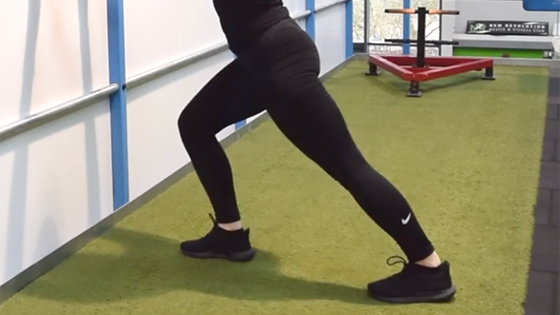
Place your hands on the wall and step forward with the foot you are not stretching, keeping your toes pointed forwards and your back heel on the ground. Lean into the wall without bending your back knee.
Bent knee calf stretch
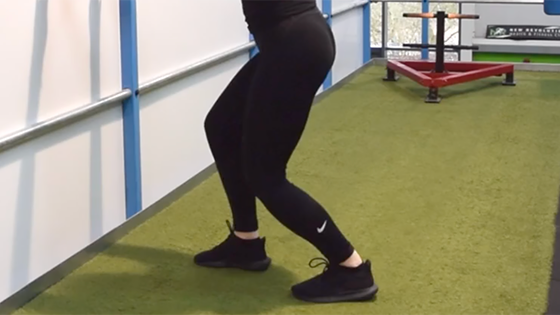
Place your hands on the wall and step forward with the foot you are not stretching, keeping your toes pointed forwards and your back heel on the ground and lean into the wall. Bend the knee and ease in to feel a stretch lower down at the back of your leg.
Strengthening exercises for Extensor tendonitis
The following strengthening exercises for Extensor tendonitis of the foot form part of our step-by-step rehab program.
Mid-range hold

This exercise is isometric, meaning it does not involve any movement. Use a band or manual resistance.
Outer range hold

This exercise is isometric, meaning it does not involve any movement. Hold your foot still as your partner pulls the resistance band.
Inversion holds

Ankle inversion holds or isometric inversion works the ankle inverter muscles statically, without moving the ankle. Apply tension to the band and resist this movement with your foot, which should not move.
Eversion holds
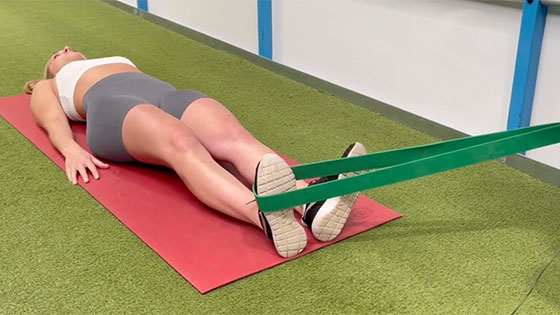
Apply tension to the band and resist this movement with your foot, which should not move.
Plantar flexion
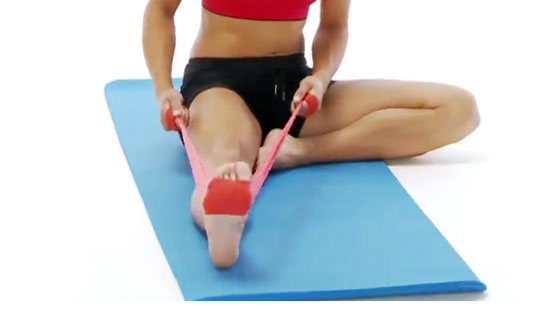
Plantar flexion with resistance band exercise. Hold the band, then pull it against a fixed foot, keeping the foot neutral and resisting the force from the band.
Single leg eversion
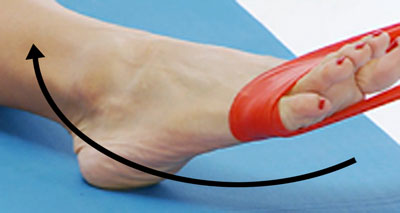
Isometric means there is no movement at the joint throughout the exercise. For eversion, turn your ankle outwards against resistance.
Dorsiflexion with resistance band
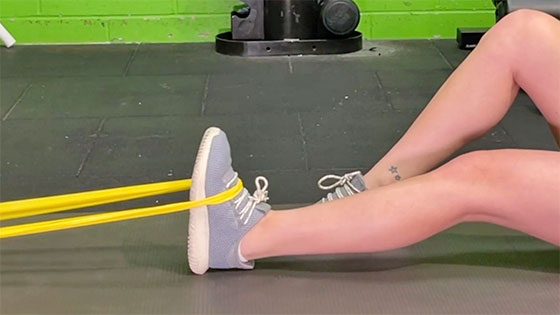
Wrap a resistance band around the forefoot and anchor it to a fixed point in front of the foot. Start with the foot pointed away and pull the foot up so the toes point to the ceiling.
Single-leg calf raise

Hang off a step and keep the movement in a comfortable range. Start bodyweight, and gradually add load with dumbbells.
Bent knee calf raise

Use both legs bent at the knee. Stand on a step with the heels off the back of the step making sure you have something to hold onto for balance. Lower the heels just below the step then raise up onto tiptoes.
Plantar to dorsi flexion with kettlebell
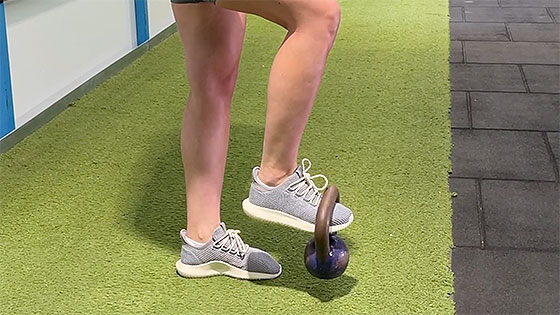
Use a kettlebell over the toes, starting with the foot on a step, and lift the foot up and down with the KB.
Kettlebell hold
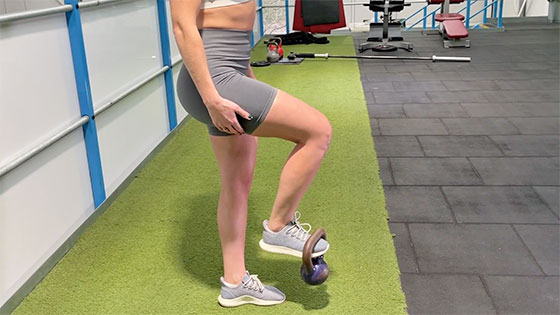
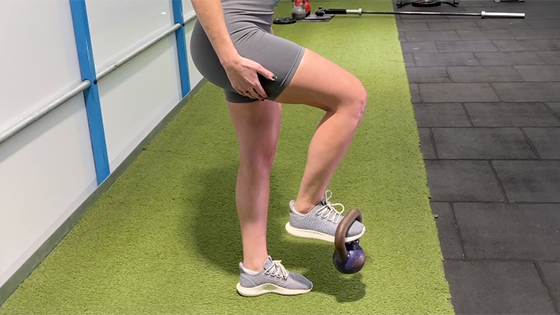
Put your toes through the kettlebell and hold in mid-position.
Tip toe walking
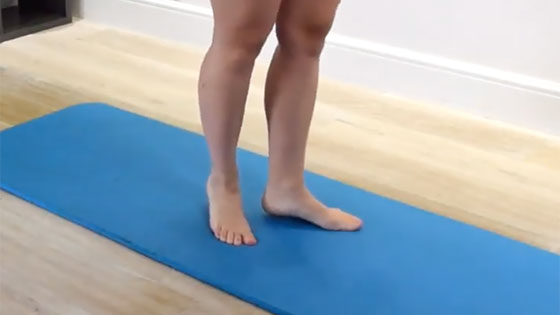
With your heels pointed inwards walk forward slowly, keeping your heels slightly off the floor. Do the same exercise going back but with your heels outwards.
Eccentric kettlebells
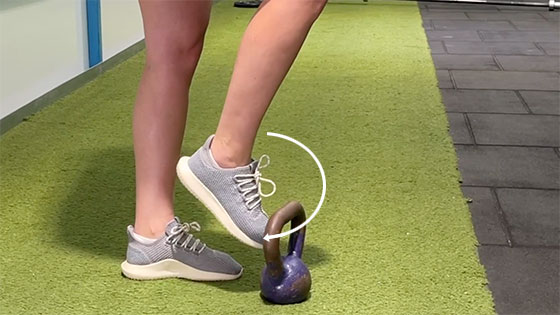
Lift the kettlebell with your foot, then lower your foot so your toes are pointing down. Drop the kettlebell to the floor, take your foot out and repeat.
High knee march with a band
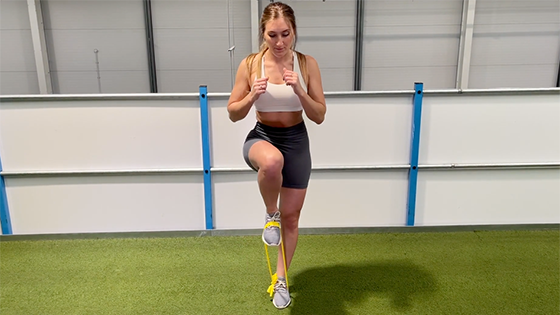
Place the band around the arches of both feet. Drive the knees up as fast as possible, keeping the foot dorsiflexed (foot is lifted upwards) throughout.
Eccentric resisted dorsiflexion
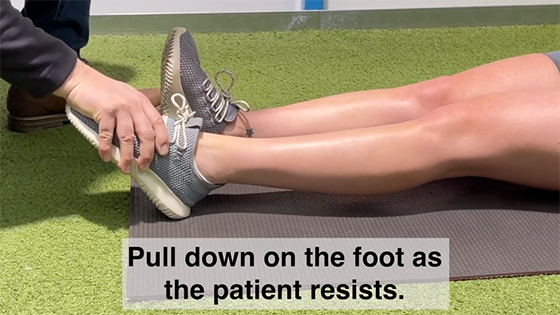
A Physio or partner pulls down on the foot as the patient resists the movement.
Movement control exercises for extensor tendonitis
Walking high knee march
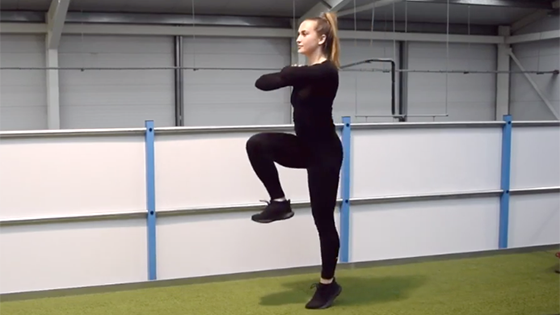
March on your toes with a good high knee lift.
A lock at wall
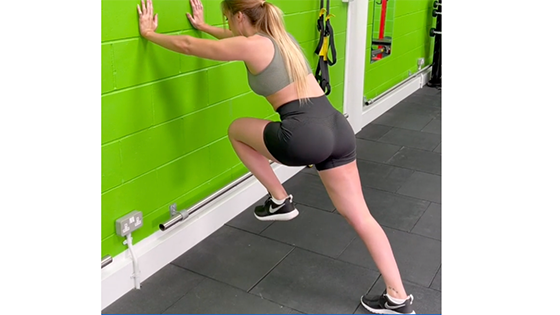
Drive the knee upwards, leaning into the wall, and take the hip up to 90 degrees. Keep the toes pulled up towards the ceiling.
Single-leg toe taps
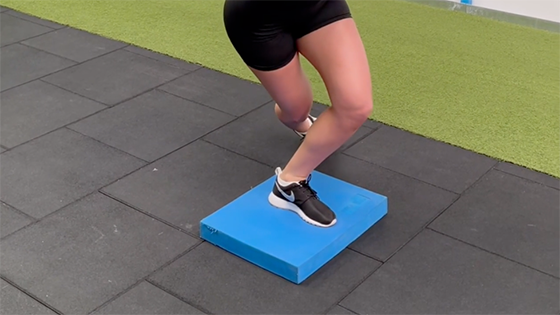
Stand on a mat, begin by raising your right foot and tapping it forward, to the side, behind you, and to the opposite side. Then, return your right foot to the mat and repeat with the left side.
